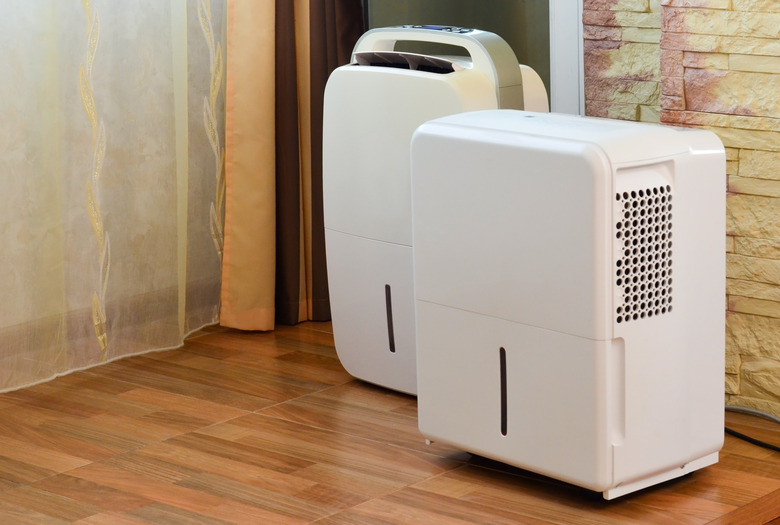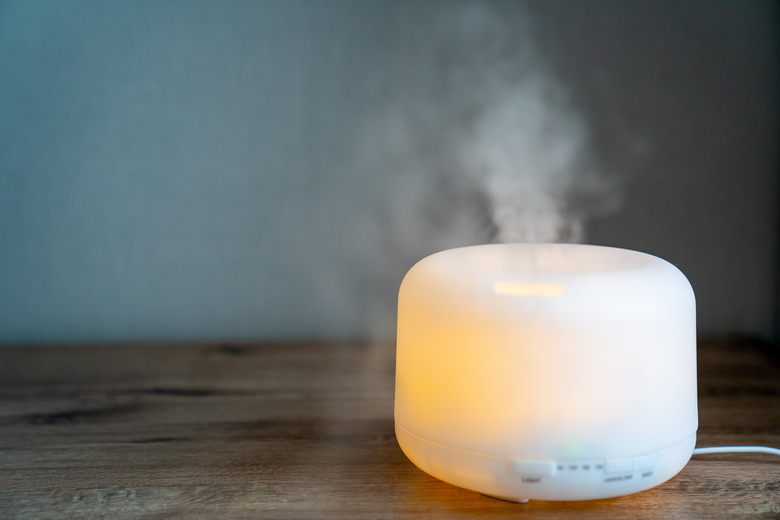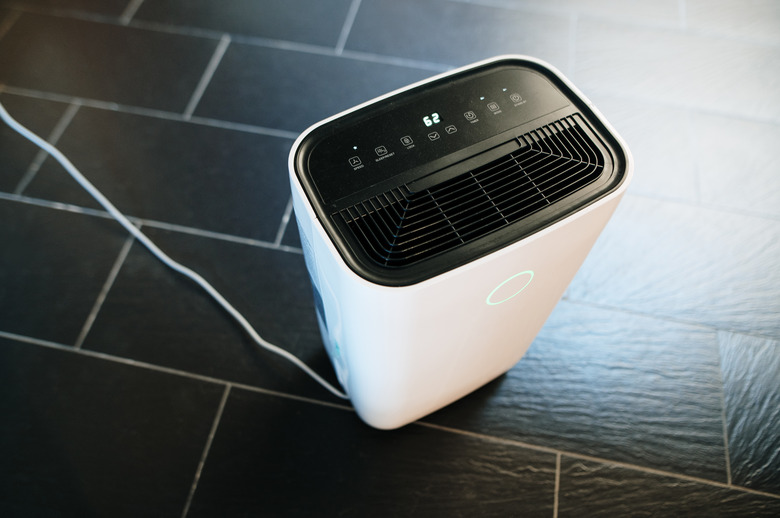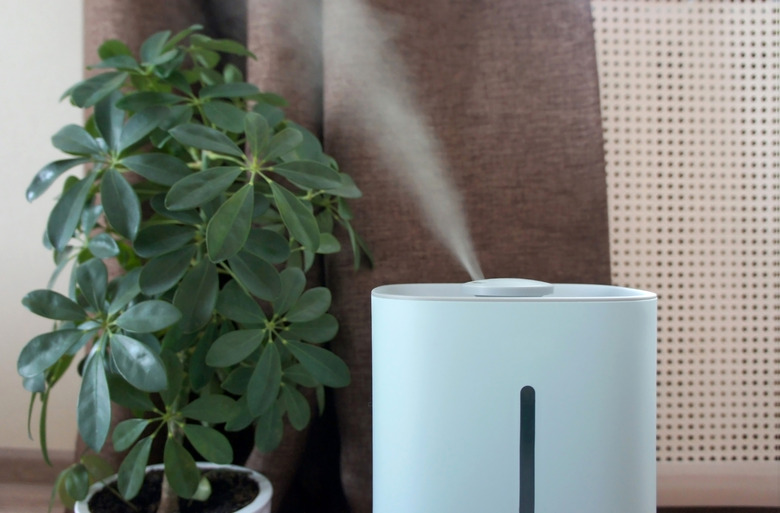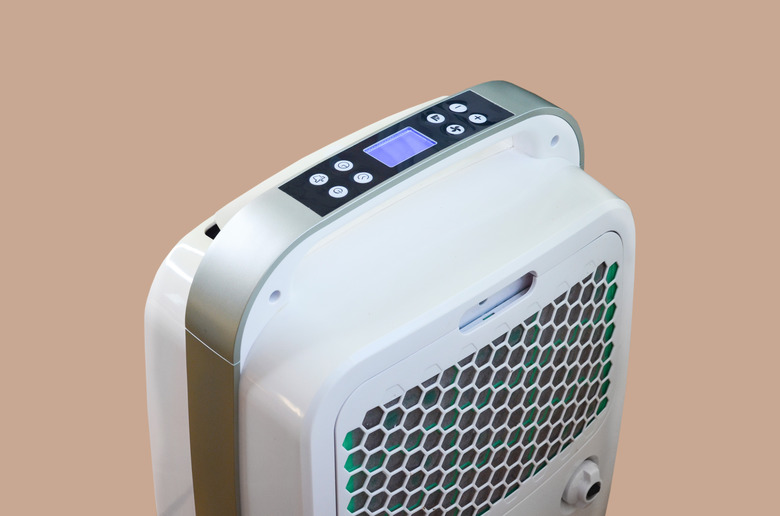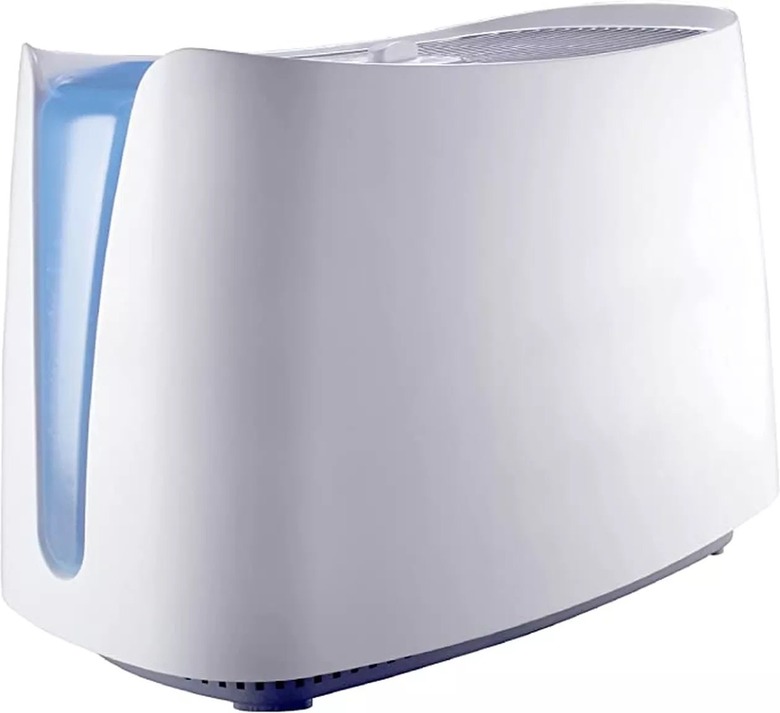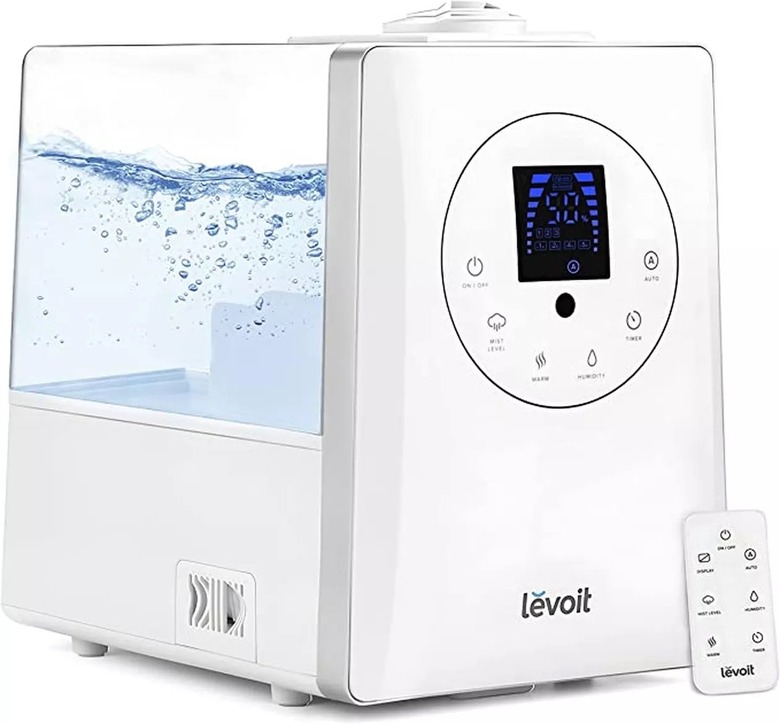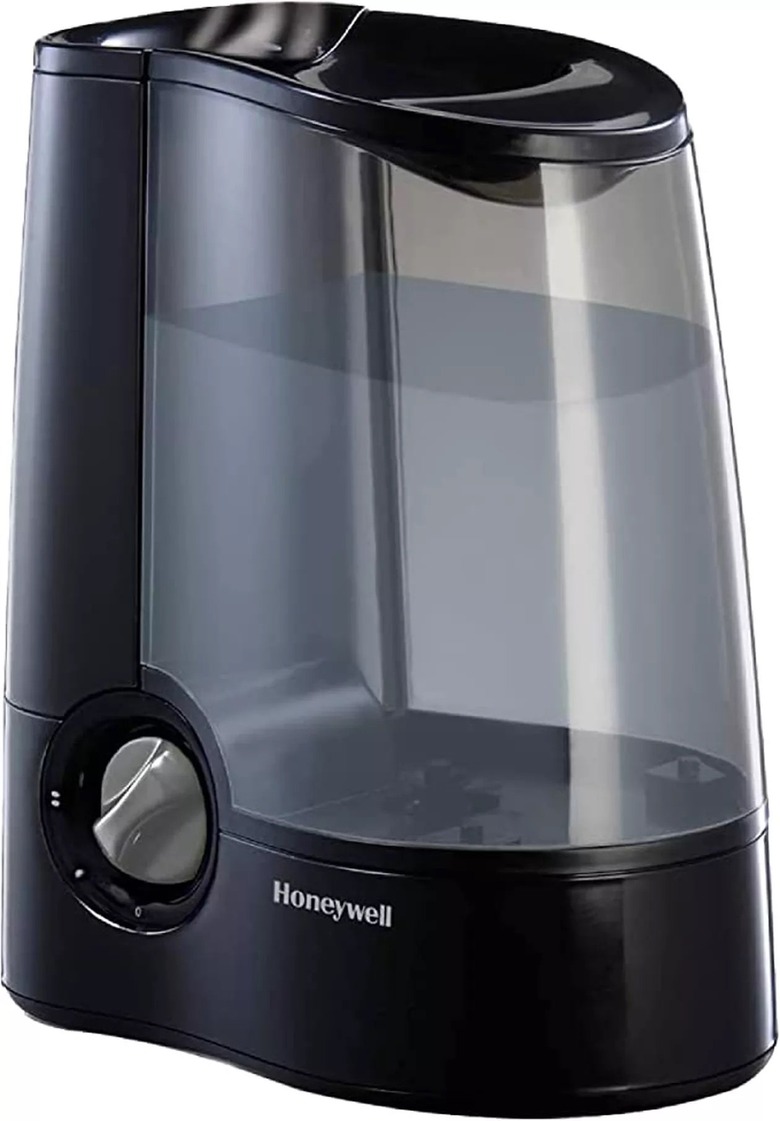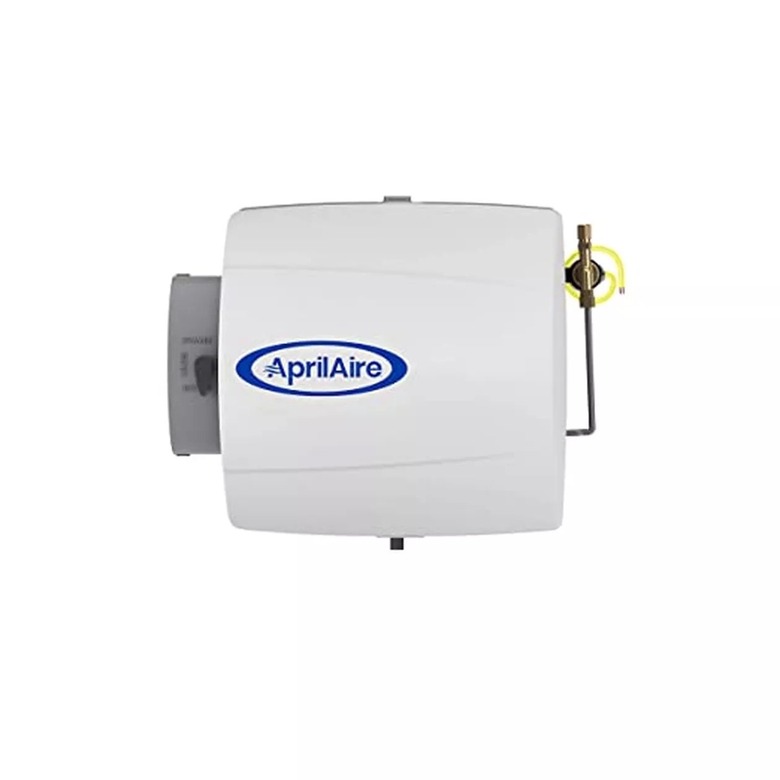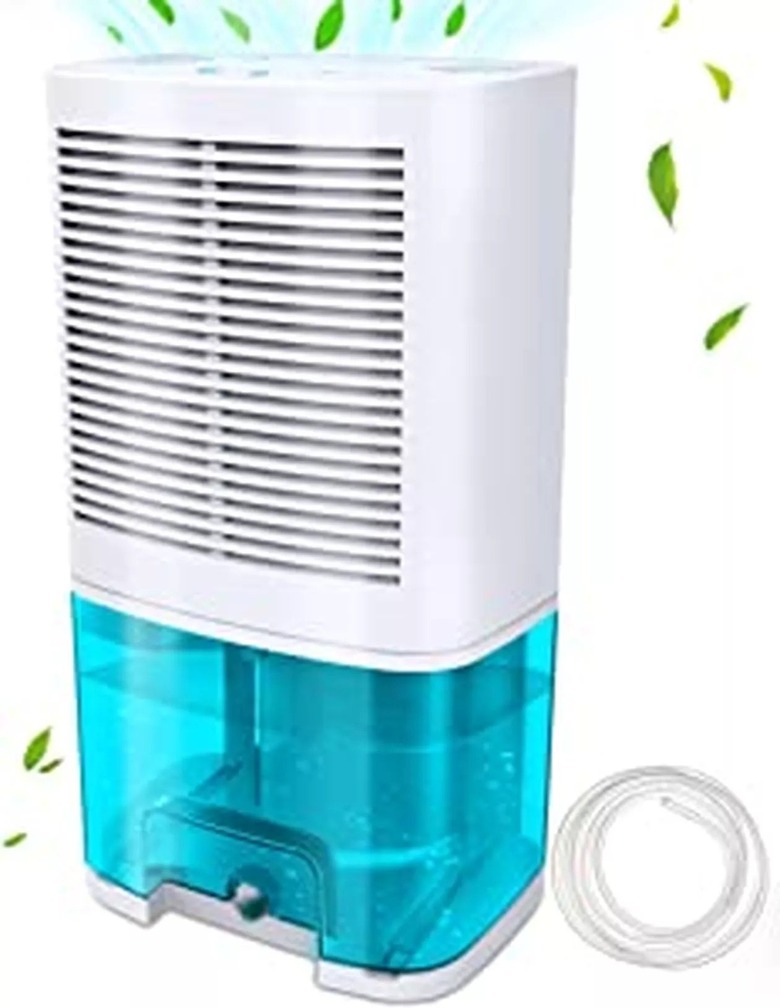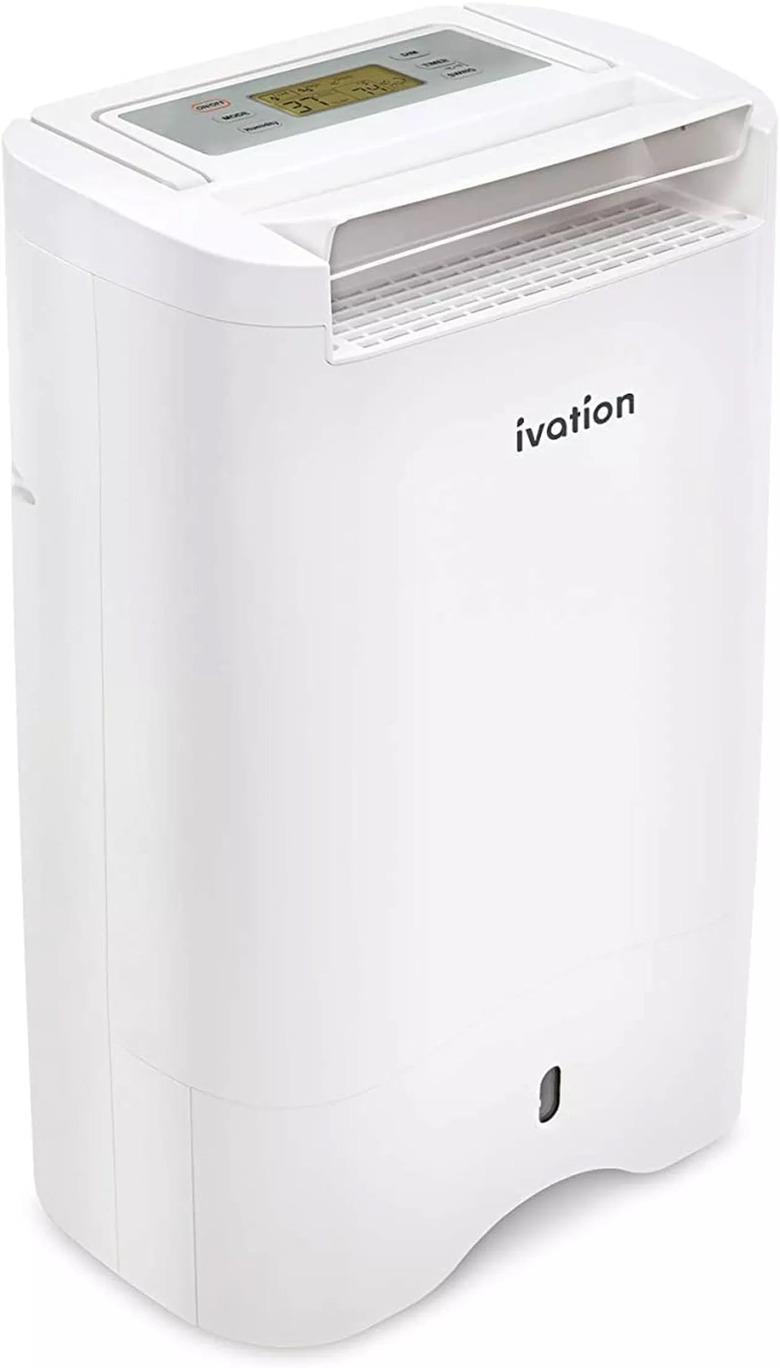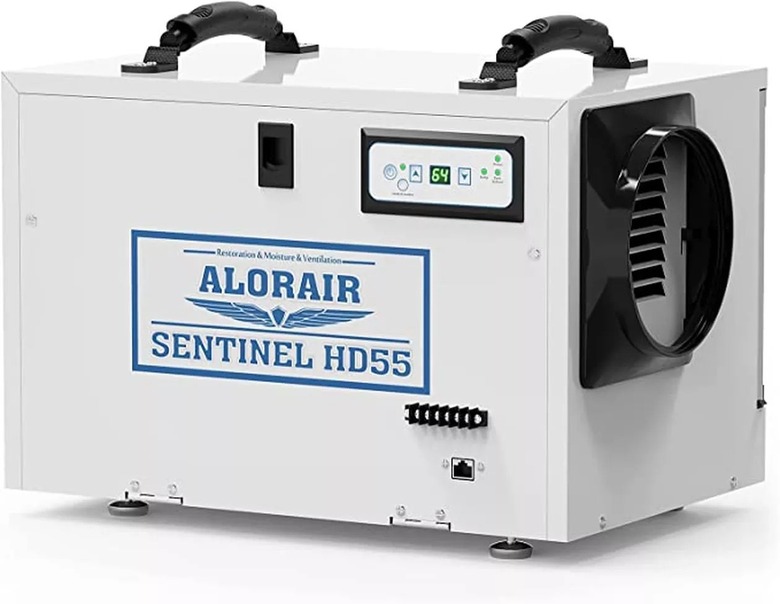When To Use A Humidifier Vs. A Dehumidifier — And How To Choose One
We may receive a commission on purchases made from links.
A humidifier does exactly what its name suggests: It adds moisture and humidity to the air. A dehumidifier does the opposite and pulls moisture and humidity out of the air. Both appliances can be quite useful in the home, and they come in different types.
So, how do you know when you need one or the other? And how do you choose one? Here's our definitive guide to humidifiers and dehumidifiers.
When Do I Need a Humidifier?
When Do I Need a Humidifier?
Generally, homeowners turn to humidifiers during the winter months. During the cold season, the air is more dry, which makes it feel colder on your skin. Dry air can also dry out your skin, eyes, and lips. Adding moisture to the air can make a room feel warmer and keep you more comfortable on chilly days without the need to crank up the thermostat. Humidifiers are also especially helpful during cold and flu season for young children who aren't yet able to blow their noses.
Although it varies from one person to the next, most people feel uncomfortable at a humidity level below 30 percent. An inexpensive hygrometer will measure the humidity level in your home. If the humidity level in your home is a little low, don't feel the need to rush out and buy a humidifier to fix what might not be broken. Low humidity levels can increase the risk of respiratory and allergy-related rhinitis, sinus infections, and nosebleeds. Leather furniture may not appreciate low humidity either, and static electricity does increase in dry air.
These problems are often quite mild, however, and sometimes never become an issue at all. Your comfort is what matters most, and when dealing with a health issue, your doctor's advice is the most trustworthy.
When Do I Need a Dehumidifier?
When Do I Need a Dehumidifier?
Dehumidifiers live on the opposite end of the spectrum and are often put to use when humidity levels exceed 50 or 60 percent. High humidity levels can make a home feel warm and sticky, which is very uncomfortable in the summer months. High humidity levels can also prove problematic in basements or in bathrooms without exhaust fans. High humidity in these often damp areas can promote mold and mildew growth.
You can decrease the humidity in your home by venting appliances, like clothes dryers, to the outdoors, and bathroom and kitchen exhaust vents while cooking or showering. If you don't have fans, open a window for natural ventilation. But if these measures don't stop you from feeling sticky in the summer, consider a dehumidifier. You should also consider a dehumidifier in rooms that smell musty or damp or where you know mold is a potential problem.
Types of Humidifiers
Types of Humidifiers
When you want a humidifier, there are several types from which you can choose. The different types of humidifiers are:
- Warm mist humidifier
- Evaporative humidifier
- Ultrasonic evaporator
- Impeller humidifier
- Whole-house humidifier
The one most common model is a warm mist humidifier (we recommend this one from Honeywell). These units heat water to turn it into steam in the same way that water evaporates when boiling on the stove. They're great for increasing both indoor humidity, heat, and air quality — and they run cleanly since the boiling of the water removes any bacteria that may be present. They work only in relatively small spaces, however, and can be unsafe around children and pets given the hot water and steam.
Other humidifiers work without heat and are classified as cool mist humidifiers. These units work in one of three ways. Evaporative humidifiers, like the Pure Enrichment MistAire Eva, pull water into a cloth filter and then use a fan to evaporate it. Ultrasonic evaporators use sound waves to vibrate water molecules and turn them into vapor. Impeller humidifiers use a submerged fan of sorts to throw water particles into the air.
All of these humidifiers are portable units you can use in specific parts of your home. Another option is to purchase a whole-house humidifier. These units are hooked to a continuous water supply and spread humidified air to your entire home through your HVAC system. Whole-house humidifiers are convenient and low-maintenance but can easily cost up to $1,200 before installation.
|
Humidifier Type |
Pros |
Cons |
|
Evaporative |
—Large capacity —Filter minimizes minerals blown into air |
—Must replace filter(s) periodically —Relatively noisy |
|
Ultrasonic |
—Quiet —Relatively small and sleek |
—Emits minerals into air —Small capacity |
|
Impeller |
—Compact |
—Relatively uncommon —Can be higher maintenance |
|
Warm Mist |
—Adds warmth to room —Quiet |
—Potential safety hazard —High energy use |
|
Whole-House |
—Humidifies entire home —Works automatically |
—Expensive to purchase and install |
Types of Dehumidifiers
Types of Dehumidifiers
Your options are a bit more limited with dehumidifiers than they are with humidifiers. The basic types of dehumidifiers are:
- Refrigerant dehumidifier
- Desiccant dehumidifier
- Whole-house dehumidifier
In refrigerant dehumidifier units, the refrigerant passes through and cools a metal coil or plate. When the dehumidifier sucks in the air, the water vapor (a gas) in the air hits the cooled metal and instantly condenses back into liquid water. This pulls the moisture out of the air and results in a lower humidity level. This is essentially the same way your air conditioner works but on a smaller scale.
Some dehumidifiers rely on desiccants rather than refrigerants. Desiccant is just a fancy word for a substance that absorbs moisture, such as silica gel. You often find desiccant packets in pill bottles or inside shipments of electronic products. Some desiccant dehumidifiers, such as disposable DampRid, are simply containers of desiccant that you open and set around the room to lower moisture levels. Other desiccant dehumidifiers are electric, slowly spinning a wheel of moisture-absorbing material through which damp air is passed.
While impractical when dealing with a small issue, like a damp basement, a whole-house dehumidifier is an option when you have problematic humidity levels throughout your home. They cost about $1,000 more than portable units, but they're convenient and can piggyback right onto your HVAC system. If you suffer from allergies to dust mites, mildew, pet hair, or another allergen that is prevalent in your home, consider a whole-house dehumidifier to improve the air quality throughout your home.
|
Dehumidifier Type |
Pros |
Cons |
|
Refrigerant |
—Efficient —Come in a variety of sizes |
—May get icy in cold temperatures —Noisy |
|
Desiccant |
—Portable and lightweight |
—Less efficient —Can be more expensive |
|
Whole-House |
—Improves indoor air quality throughout house —Prevents mold growth throughout house |
—Requires professional installation —Expensive |
How to Choose an Appliance
How to Choose an Appliance
When shopping for humidifiers and dehumidifiers, there are a few important features to consider.
- Noise
- Water reservoir size
- Filter
- Energy efficiency
Noise Level
It may not matter to you if a noisy dehumidifier rattles away in your basement, but you probably don't want a loud appliance in a room where you're trying to sleep or watch a movie with your family. Despite their use of sound waves to humidify the air, ultrasonic humidifiers are usually the quietest since the sounds they produce are at a frequency humans can't hear.
Water Reservoir Size
You'll want to check the size of the water reservoir on the appliance before buying it. A large tank on a humidifier means filling it less often, while a large reservoir on a dehumidifier means emptying it less often. Some dehumidifiers have a drain that you can hook to a hose and send directly to a water drain so the unit never needs emptying.
Filter
It's also important to understand if the unit has a filter (evaporative humidifiers always do), how much those filters cost, and how often you'll need to replace them. Stick to units that are easy to clean. Bacteria buildup makes periodic cleaning necessary, and you'll want the job to be quick and easy. This is more important with humidifiers than dehumidifiers, which usually just need a periodic wash of the water collection bucket.
Energy Efficiency
Don't overlook energy efficiency either. Neither a humidifier nor a dehumidifier is likely to consume enough energy to skyrocket your bill, but some models definitely use less energy than others. Generally, warm mist humidifiers use the most energy and ultrasonic units the least. The energy use of a dehumidifier is specified in its energy factor, a measure of how much water (in liters) is pulled from the air per kilowatt-hour of electricity used. The higher the energy factor, the more energy efficient the dehumidifier.
Best Humidifiers
Best Humidifiers
Looking for the best humidifiers on the market? Here are some of our favorites:
Best Evaporative Humidifier
Best Ultrasonic Humidifier
Best Warm Mist Humidifier
Best Whole-House Humidifier
Best Dehumidifiers
Best Dehumidifiers
Need to get the moisture out your house? Here are our top picks for the best dehumidifiers:
